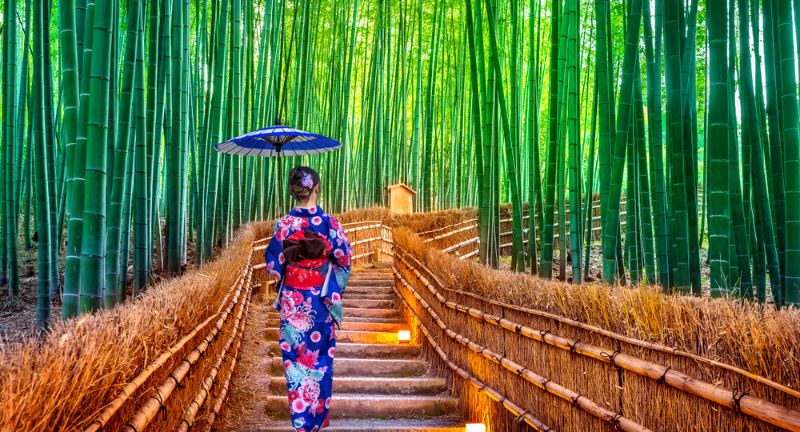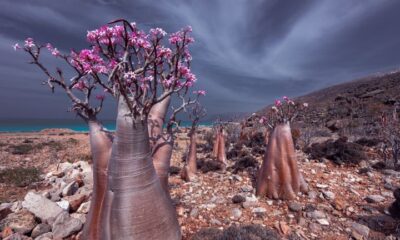EXPLORE
9 Most Incredible Tunnels Around The Globe
Published
1 year agoon

Shutterstock
Discovering the world’s most intriguing and diverse tunnels offers a journey through time, geography, and human ingenuity. From the depths of Norway’s subsea marvels to the enchanting bamboo-lined paths in Japan, each tunnel tells a unique story of engineering prowess, historical significance, or the harmonious blend of nature and human creation.
Join us on an exploration of these subterranean wonders, where we delve into the depths of transportation, art, and the remarkable intersections between man-made structures and the natural world.
Stockholm metro, Sweden

Shutterstock
The Stockholm metro system, inaugurated in 1950, boasts an extensive network of tunnels and is known for its stunning art installations within various stations. The system has evolved over the years and is a testament to Sweden’s commitment to efficient and aesthetically pleasing urban transportation.
Arashiyama Bamboo Grove, Japan

Shutterstock
While not a traditional tunnel, the enchanting Bamboo Grove in Arashiyama, Kyoto, features towering bamboo stalks forming a natural canopy. This iconic pathway has historical and cultural significance, attracting visitors who appreciate the serene beauty of this unique “tunnel” environment.
Eisenhower Tunnel, Colorado, USA

Shutterstock
Opened in 1973, the Eisenhower Tunnel is a key transportation route through the Colorado Rockies, allowing vehicles to pass beneath the Continental Divide. Named after President Dwight D. Eisenhower, the tunnel spans over 1.7 miles (2.7 km) and facilitates year-round travel across the challenging mountainous terrain.
Channel Tunnel, UK and France

Shutterstock
Inaugurated in 1994, the Channel Tunnel, also known as the Eurotunnel or Chunnel, is a remarkable feat of engineering connecting the United Kingdom and France beneath the English Channel. Stretching over 31 miles (50 km), with a significant portion underwater, the tunnel facilitates high-speed rail and vehicle transportation, fostering closer ties between the two nations.
Bund Sightseeing Tunnel, China

Shutterstock
Situated in Shanghai, the Bund Sightseeing Tunnel is a unique underwater pedestrian tunnel beneath the Huangpu River. Opened in 2000, it combines colorful light displays and audio effects, offering a mesmerizing journey between the historic Bund and the futuristic Pudong district.
Vardø Tunnel, Norway

Shutterstock
Completed in 1982, the Vardø Tunnel is a subsea road tunnel connecting the islands of Vardø and Vardøya in northeastern Norway. Spanning approximately 2.6 miles (4.2 km), it plays a vital role in enhancing connectivity in the remote Arctic region.
The Lærdal Tunnel, Norway

Shutterstock
Recognized as the world’s longest road tunnel, the Lærdal Tunnel in Norway stretches over 15.2 miles (24.5 km) and was opened in 2000. Connecting Lærdal and Aurland, the tunnel features illuminated sections to mitigate the psychological impact of its length and enhance the driving experience.
Halnaker Tree Tunnel, England, UK

Shutterstock
This enchanting tree-lined tunnel in West Sussex, England, is formed by overarching branches, creating a natural tunnel effect along Halnaker footpath. While not a constructed tunnel, it provides a picturesque and serene pathway, attracting nature enthusiasts and photographers.
Leake Street Arches, England, UK

Shutterstock
Located beneath the railway tracks of Waterloo Station in London, the Leake Street Arches constitute a unique tunnel adorned with vibrant street art. Since the famous “Banksy Tunnel” initiative in 2008, the space has become a legal street art gallery, showcasing an ever-changing display of urban art.
Conclusion

Shutterstock
Our exploration of these remarkable tunnels, it becomes evident that these subterranean passages are more than mere conduits; they are threads that weave together stories of innovation, connectivity, and cultural significance. From the ancient roads of Italy with their wartime legacy to the futuristic marvels of Norway’s subsea tunnels, each structure resonates with a tale of human achievement and the ever-evolving relationship between societies and their environments.
As we reflect on these diverse tunnels, it becomes clear that beneath the surface lies a world of inspiration, where engineering, art, and nature converge to shape the narrative of our shared human history.
More From Bon Voyaged
-


30 Reasons Why Australia Deserves a Spot on Your Travel…
-


Most Isolated Regions on Earth Revealed
-


25 Most Devastating Hurricanes In History
-


28 Towns Across The World That Offer Canal Street Living
-


9 Spookiest Places In The USA
-


25 Items That Make Traveling A Breeze
-


Why You Should Try White Water Rafting
-


Extreme Adventure: Hiking the World’s Toughest Trails
-


Why Oregon Should Be Your Next Vacation
-


Most Popular Coffee Shops In 20 Different Countries
-


9 Most Mysterious Creatures Living In The Ocean
-


9 Strange Places Totally Off Limits

